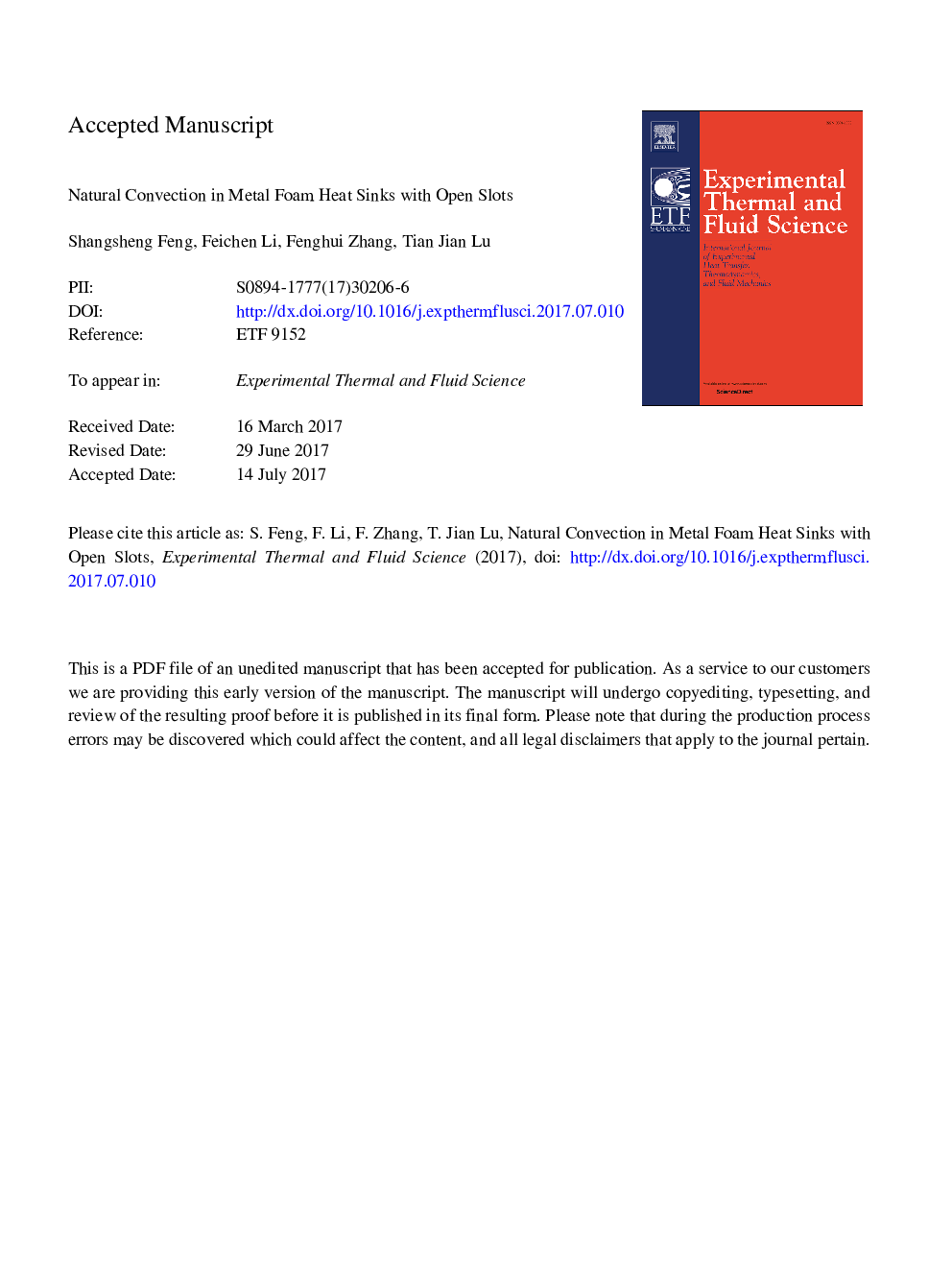| Article ID | Journal | Published Year | Pages | File Type |
|---|---|---|---|---|
| 7051910 | Experimental Thermal and Fluid Science | 2018 | 19 Pages |
Abstract
Natural convection in metal foam heat sinks with open slots was investigated experimentally. The test sample was made in-house by attaching several foam strips having fixed width of 10 mm and length of 100 mm onto a substrate of 100 Ã 100 Ã 4 mm3 in size. A total of 29 test samples with different slot widths (s = 0/2.86/5/8/12.5/20 mm) and foam heights (H = 10/20/40/60/80 mm) were tested under both horizontal and vertical orientations for each sample. The zero width of open slots corresponds to a heat sink with a single foam block as considered in open literature, while the non-zero open slot width 2.86/5/8/12.5/20 mm corresponds to 8/7/6/5/4 foam strips in a heat sink, respectively. Compared to a single foam block, the foam with open slots are more permeable for air penetrating through the heat sink. More foam strips means more heat transfer area available but less permeation of the heat sink. Experimental results revealed that there exists an optimum open slot width (5-8 mm) for maximum heat transfer coefficient at given heat sink volume. With optimum open slot width, the heat transfer coefficient is enhanced by 14.9%, 21.3%, 37.6%, and 38.2% relative to single foam block (s = 0 mm) at the foam height of 10 mm, 20 mm, 40 mm, and 80 mm, respectively.
Related Topics
Physical Sciences and Engineering
Chemical Engineering
Fluid Flow and Transfer Processes
Authors
Shangsheng Feng, Feichen Li, Fenghui Zhang, Tian Jian Lu,
